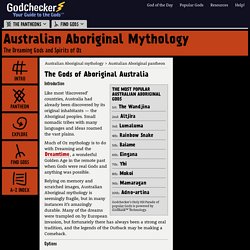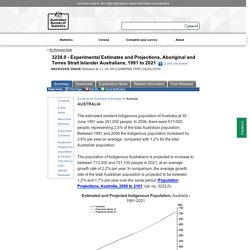

Somalia - Economy. About three-fifths of Somalia’s economy is based on agriculture; however, the main economic activity is not crop farming but livestock raising.

Between 1969 and the early 1980s, Mohamed Siad Barre’s military government imposed a system of “Scientific Socialism,” which was characterized by the nationalization of banks, insurance firms, oil companies, and large industrial firms; the establishment of state-owned enterprises, farms, and trading companies; and the organizing of state-controlled cooperatives. In the end, this experiment weakened the Somalian economy considerably, and, since the collapse of the military regime, the economy has suffered even more as a result of civil war. In the early 21st century, the country remained one of the poorest in the world, and its main sources of income came from foreign aid, remittances, and the informal sector. Somalia - THE SOCIAL ORDER.
Somalia Table of Contents The overwhelming majority of Somalis trace their genealogical origin to the mythical founding father, Samaale or Samaal.

Even those clan-families, such as the Digil and Rahanwayn in southern Somalia, whose members in many cases do not trace their lineage directly to Samaal, readily identify themselves as Somalis, thereby accepting the primacy of Samaal as the forebear of the Somali people. 1960-2020 Historical. Economic Indicators Country name: conventional long form: Federal Republic of Somalia conventional short form: Somalia.

Somalia population. What Language is Spoken in Somalia – American Translation Partners®
Somali Culture. The Rainbow Serpent in Aboriginal Mythology: Story & Myth - Video & Lesson Transcript. The Rainbow Serpent Story There are numerous stories that feature the rainbow serpent at the center.

One, titled The Rainbow Serpent, is an old aboriginal tale passed down through the generations. It centers on how the rainbow serpent came to be, told by an older tribesman to a younger, more inquisitive one. Australian Mythology - the Gods of Aboriginal Oz. Introduction Like most ‘discovered’ countries, Australia had already been discovered by its original inhabitants — the Aboriginal peoples.

Small nomadic tribes with many languages and ideas roamed the vast plains. Much of Oz mythology is to do with Dreaming and the Dreamtime, a wonderful Golden Age in the remote past when Gods were real Gods and anything was possible. Relying on memory and scratched images, Australian Aboriginal mythology is seemingly fragile, but in many instances it’s amazingly durable. Many of the dreams were trampled on by European invasion, but fortunately there has always been a strong oral tradition, and the legends of the Outback may be making a Comeback. LUMALUMA - the Australian Aboriginal God of Gluttony (Australian Aboriginal mythology) He started off as a whale who came ashore at Cape Stewart in the guise of a man who knew sacred rituals which he was happy to share.

However, when it came to food, he took more than his share, declaring himself sacred so that only he could eat at feasts. Consequently everyone stopped inviting him, but this made no difference as he turned up anyway. He only had to see smoke from a fire and he could time his arrival to perfection. Aboriginal Culture. Traditional Owner Charlie Mangulda with a Rainbow Serpent in Arnhem Land, Northern Territory.

Photo: David M. Welch Aboriginal religion, like other religions, is characterised by having a god or gods who created people and the surrounding environment during a particular creation period at the beginning of time. 3238.0 - Experimental Estimates and Projections, Aboriginal and Torres Strait Islander Australians, 1991 to 2021. The estimated resident Indigenous population of Australia at 30 June 1991 was 351,000 people.

In 2006, there were 517,000 people, representing 2.5% of the total Australian population. Between 1991 and 2006 the Indigenous population increased by 2.6% per year on average, compared with 1.2% for the total Australian population. Profile of Indigenous Australians. Aboriginal and Torres Strait Islander people are the Indigenous peoples of Australia.

They are not one group, but rather comprise hundreds of groups that have their own distinct set of languages, histories and cultural traditions (AIHW 2015). The health and welfare of Indigenous Australians living in the big cities are different to those living in the Torres Strait, which are different again to those living on the outskirts of Alice Springs or those living in remote communities. Dedicated Indigenous representation in the Australian Parliament. Research Paper Index Research Paper no. 23 2008–09 Dedicated Indigenous representation in the Australian Parliament Brian Lloyd Politics and Public Administration Section 18 March 2009 Contents.

Questions and Answers about Aboriginal & Torres Strait Islander Peoples. For the most recent "Face the Facts" see our Education part of the website. Question 1. Who are Aboriginal and Torres Strait Islander peoples? Aboriginal and Torres Strait Islander peoples are the first inhabitants of Australia.
Old definitions based on skin colour or percentages of 'Aboriginal blood' have been replaced by modern definitions which stress ancestry and identification as the key to Aboriginal identity. What is Aboriginal Dreamtime? The Aborigines learned about their beginnings through their Dreamtime creation folklores that told of the momentous actions of the creators. The myths were the foundation of Aboriginal society and provided certainty about existence. The Australian aborigines believed that the land they occupied was once not in existence like it is today.
It was free from form or life, vacuous – empty. They unquestionably believed that this was the way things once were because the ancestors had said so and they would never doubt their word. It was during what has become known as the Dreamtime, the land, mountains, hills, rivers, plants, lifeforms both animal and human and sky above were formed by the actions of mysterious and supernatural spirits.
The Northern Territory climate. Northern Territory, Australia. The Dry The dry season in the Top End runs from May to October. Temperatures range from 21°C to 32°C (70°F to 90°F) – these are similar to the wet season but with lower humidity of around 20 to 35% and there’s little to no rain. The days are sunny and the nights are mild. Locals know it’s the Dry when the dragonflies come out to play.
Many travellers find this time of year the most comfortable, as the moderate temperatures make activities such as bushwalking, hiking, camping and cycling ideal, and most areas can be easily accessed. Aboriginal Australians, facts and information. Australia’s first people—known as Aboriginal Australians—have lived on the continent for over 50,000 years. Today, there are 250 distinct language groups spread throughout Australia.
Aboriginal Australians are split into two groups: Aboriginal peoples, who are related to those who already inhabited Australia when Britain began colonizing the island in 1788, and Torres Strait Islander peoples, who descend from residents of the Torres Strait Islands, a group of islands that is part of modern-day Queensland, Australia. All Aboriginal Australians are related to groups indigenous to Australia. However, the use of the term indigenous is controversial, since it can be claimed by people who descend from people who weren’t the original inhabitants of the island. Legally, “Aboriginal Australian” is recognized as “a person of Aboriginal or Torres Strait Islander descent who identifies as an Aboriginal or Torres Strait Islander and is accepted as such by the community in which he [or she] lives.”
Aboriginal Australian Geography. Aboriginal Australians are the majority indigenous people of Australia, an island continent and nation of the South Pacific. For tens of thousands of years, Aboriginal groups have lived across the continent and its numerous islands. Modern Australia covers 2,966,153 square miles or 7,682,300 square kilometers. The Torres Strait Islands off the northern coast are home to a separate indigenous people known as the Torres Strait Islanders. As of 2016, indigenous people make up about 3.3 percent of Australia’s total population, or 798,400 people (including Torres Strait Islanders). Their population has slowly increased in recent decades. African Beliefs and Fables. Ashanti Empire. Ethnic and religious groups info 2. The Ashanti People, a story - African American Registry. Akan (Twi) at Rutgers. World Bank Climate Change Knowledge Portal.
Wonders of the African World - Episodes - Slave Kingdoms - Wonders. What Type Of Government Does Somalia Have? - WorldAtlas. 2016 Report on International Religious Freedom - Somalia. What Languages are Spoken in Somalia? - WorldAtlas.